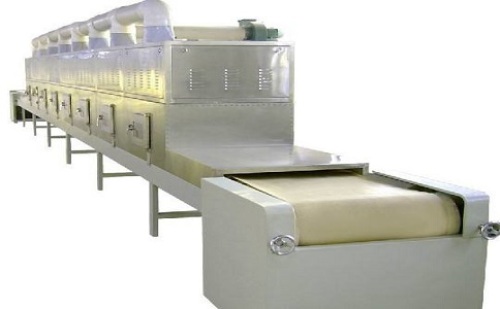Reading: In daily life, many items can not be stored in a humid environment, such as food, wood, clothing, etc. How to keep these items dry is given to the drying equipment, drying equipment, also known as dryers and dryers. The equipment used for drying operation vaporizes the moisture in the material (generally refers to moisture or other volatile liquid components) by heating to obtain a solid material with a specified moisture content. Since natural drying is far from meeting the needs of production development, various mechanized dryers are increasingly being used.

How is the classification of drying equipment? Xiaobian to introduce you to introduce.
Pressing pressure
According to the operating pressure, the dryer is divided into normal pressure dryers and vacuum dryers. Operating under vacuum can reduce the wet partial pressure of steam in the space and accelerate the drying process, and can reduce the boiling point of the moisture and the drying temperature of the materials. Steam is not easy. Leakage, therefore, vacuum dryer is suitable for dry thermal sensitive, easily oxidized, explosive and toxic materials and wet steam recovery occasions.
According to the heating method, the dryer is classified into convection type, conduction type, radiation type, and dielectric type. Dryers of this type do not use drying media and have high thermal efficiency. The product is not contaminated, but the drying capacity is limited by the heat transfer area of ​​the metal walls. The structure is also complex and often operates under vacuum. The radiation dryer uses various types of radiation. The device emits a certain wavelength range of electromagnetic waves, which is selectively absorbed by the surface of the wet material and converted into heat for drying. The dielectric dryer uses high-frequency electric fields to effect the drying of heat inside the wet material.
According to the movement mode of wet materials, the dryer can be divided into fixed bed type, agitation type, spray type and combination type; according to the structure, the dryer can be divided into box type dryer, conveyor type dryer, drum type dryer, and stand Dryers, mechanical stirring dryers, rotary dryers, fluidized bed dryers, air dryers, vibratory dryers, spray dryers, and combination dryers.
Equipment selection?
1. Physical and chemical characteristics of the material - form, moisture content, water content, crystal water, particle size, bulk density, viscosity, heat-sensitive, softening point, phase transition point, thixotropy, toxicity, corrosion, odor, flammability, explosiveness , electrostatic, breathable, agglomerate, crystal or particle susceptibility...
2. Drying characteristics of the material - The drying curve, the critical moisture content, and the equilibrium moisture content under the drying conditions to be selected.
3. Drying production requirements and long-term planning.
4. The impact of material commodity value and drying effect on it. Such as product moisture, pollution, temperature, wear, pulverization, comminution, rehydration ... and other effects on the value of goods.
5. The requirements for the material recovery rate.
6. The sequence of the material drying process. (Involving the state method of giving and placing)
7. Past drying methods for materials or similar products.
8. Available heat sources (coal, fuel oil, electricity, gas, liquefied gas, natural gas)
9. Installation site size, with or without special requirements.
10. Environmental Requirements - Restrictions on dust emission, noise, vibration, odor, volatiles, etc.
11. The amount of procurement funds that may be invested, local labor, land, and energy prices.
12. The user's operator level and maintenance capabilities.
13. Average annual temperature and humidity in the area.
The above is the classification and selection of drying equipment. Customers who need it quickly visit our website to select it.
U tube heat exchanger is suitable for the large temperature difference between tube side and shell side. The shell side media is easy to scale and needs cleaning, while the tube side media is clean and not easy to scale. It is also suitable for high temperature, high pressure, fluid corrosive working conditions.
Each heat exchange tube is bent into U-shape, the two ends are fixed in the upper and lower areas of the same Tube Sheet, and divided into two chambers of inlet and outlet with the partition in the tube box. This kind of heat exchanger completely eliminates the thermal stress, the structure is simpler than the floating type, but the tube side is not easy to clean.
The number of tubes is small, the utilization of the tube sheet is not frequent, and the shell side fluid is easy to short circuiting, which is unfavorable to heat transfer. If there is a leak or damage in the tube, the external U-tube can be replaced, while the broken inner tube can not be replaced, only plugged, and one broken U-tube means two broken, so the U-tube easily scrapped.
U Tube Heat Exchanger,Beu Heat Exchanger,U Type Heat Exchanger,U Tube Type Heat Exchanger
Guangdong Jiema Energy Saving Technology Co.,Ltd , https://www.jiemaheatexchanger.com